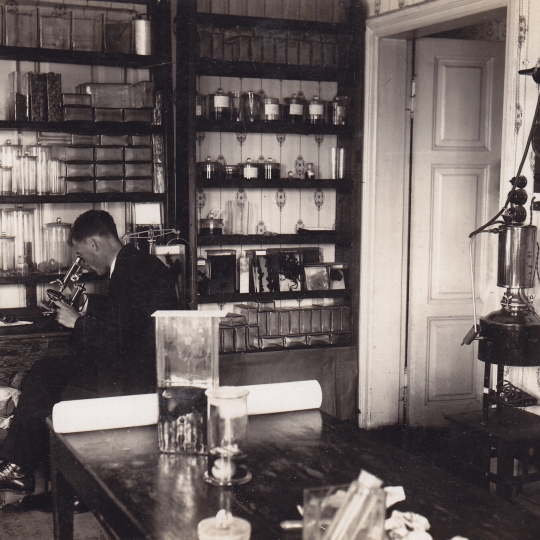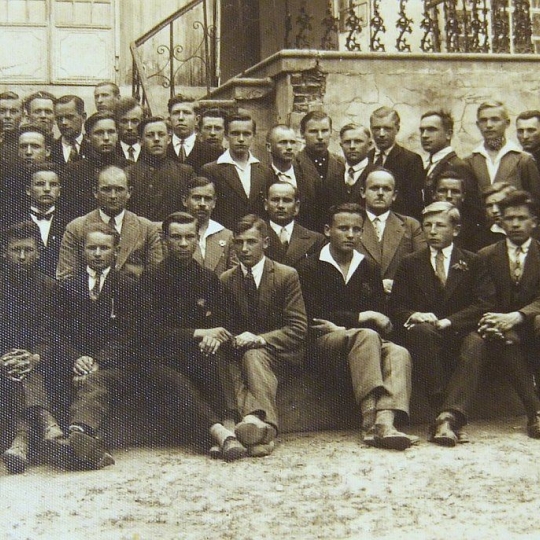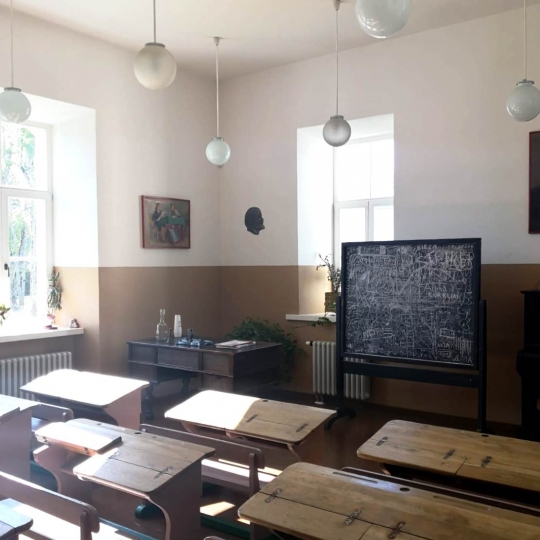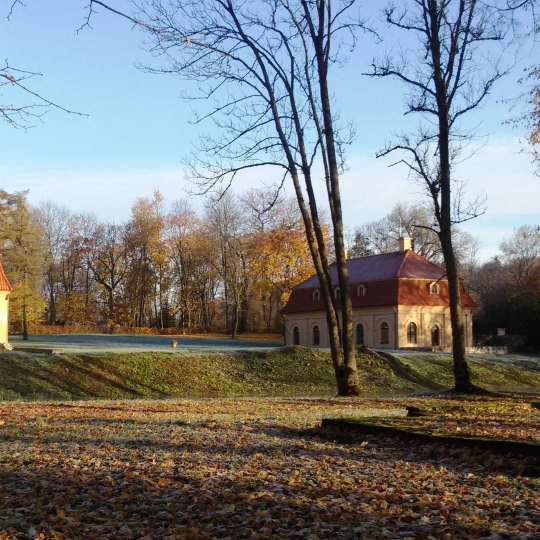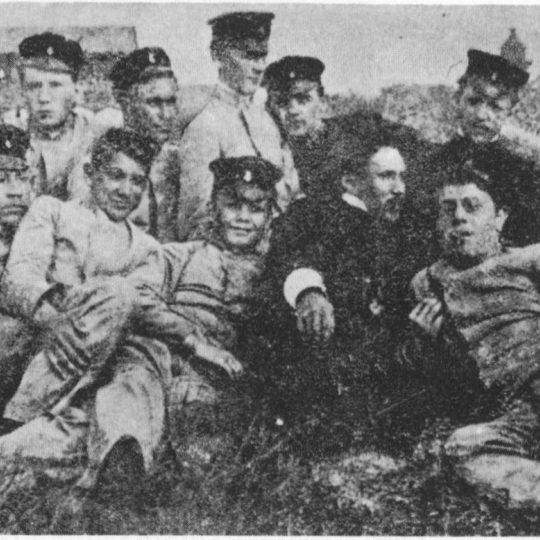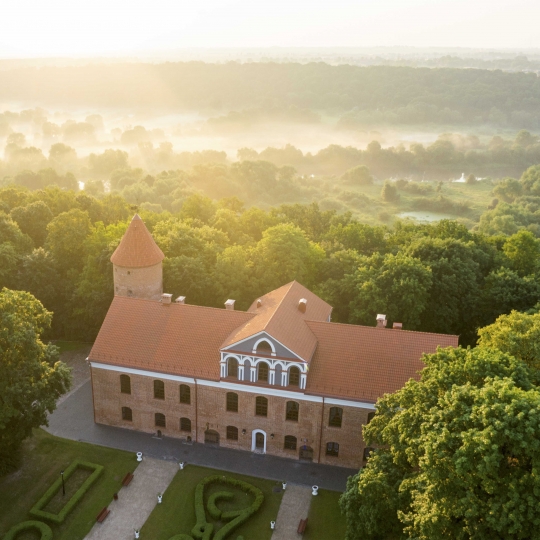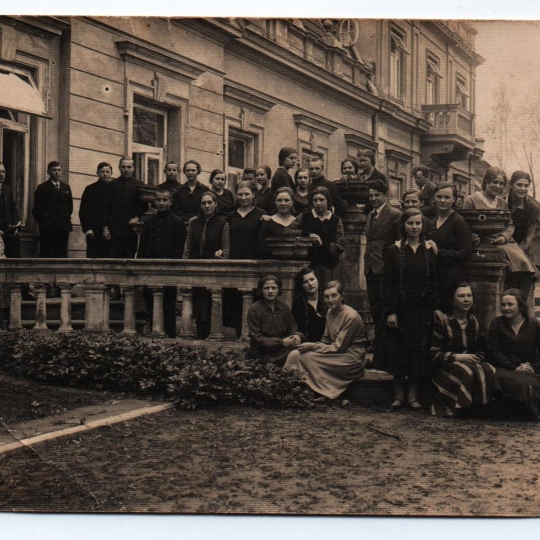Articles
Lithuanian manor schools
2019 08 22For centuries, education was the privilege of the aristocracy, the nobles, and the clergy. Eventually, as education became more and more comprehensive, a network of Lithuanian manor schools developed in the country. Lithuanian manors had establishments of general, artistic, and vocational training, some of which still operate today.
The first schools in Lithuania emerged after its baptism in 1387 when the need to train clergymen and scribes arose. Education was of the utmost importance to the nobility, however, it was common for the nobles to study at the manor of their sovereign, but not with others. When traveling and studying abroad became more common in the 15th century, it was mainly the privilege of the nobility and the townspeople. It is believed that Albertas Goštautas, the Grand Chancellor of Lithuania, the state and military man, the manager of Liubavas Manor, contributed to changing this attitude. Actually, while living in Krakow in his youth, he did not study with others at the university but hired its professors for his private studies. Later, it became a standard practice for young people from noble families to go to foreign universities, as “home” schooling was no longer sufficient.
During the period of the Grand Duchy of Lithuania and later, the noblemen took care of education and were establishing schools in their estates. The landlords were notable for their patronage of culture, they invited Lithuanian and foreign artists - painters, poets, supported the studies and works of musicians, established musical schools.
There was a famous orchestra music school at Plungė Manor, where M. K. Čiurlionis studied under the patronage of his patron Michał Ogiński. In 1889, the Duke brought a young talented fourteen-year-old man to Plungė. Here the future composer was immediately admitted to the manor orchestra school. Together with other musicians of the manor orchestra, he learned to play the instruments - flute, clarinet, piano, and organ - he was interested in everything and fully developed, both as a musician and as an artist (while studying in Plungė he created about 20 paintings). Young M. K. Čiurlionis stood out not only for his talent but also for being ambitious. As a story goes, he was brave enough to fight back, and once, after beating the Duke without mercy in a snow battle, got what he deserved... At least for a short time. Another time he pleasantly surprised his patron by composing a musical piece for Saint Michael’s Day. M. Ogiński funded the studies of M. K. Čiurlionis in Warsaw (a monthly scholarship from the patron made 13 rubles) and later at the Leipzig Conservatory.
Benedykt Henryk Tyszkiewicz, the Count of Raudondvaris Manor, sponsored the organist and composer Juozas Naujalis, the pioneer of Lithuanian professional music. In 1869, the future musician born in Raudondvaris also studied at Warsaw Music Institute under the sponsorship of Count Tyszkiewicz, only a few years earlier than M. K. Čiurlionis.
The years of the First World War marked the collapse and decline in many areas, including education. In 1918, when Lithuania became an independent state, the situation began to change significantly. The post-war period saw the proliferation of specialized educational institutions, schools, societies, educational clubs, etc., largely thanks to various associations: Educational Society of V. Kudirka, the Society of the Bishop M.Valančius, the Society of Culture and Education, national unions of Lithuanian teachers...
This way many historic manor buildings were turned into schools, both basic and so-called “specialized” schools - the schools of forestry, horticulture, dairy farming, police, military, military aviation, art, music, commercial trade, and crafts.
A public school in the vicinity of Liubavas Manor near Vilnius was established in 1922. The then manager of Liubavas Manor Rafał Jan Slizień allocated a plot of land and sponsored the construction of a new school building. A year later, the children and teachers, who previously simply gathered in private homes, were already able to enjoy their new facilities.
The primary school at Saldutiškis Manor house in Utena district was established in 1921. Until then, much like in Liubavas, the elementary school was in the village, in the homes of people, and was funded by the pupils’ parents. The children would gather to the manor to study until 1975 when a separate school building was built.
Zypliai Manor in Šakiai district had caring hosts until World War I, but in the post-war period, it fell into the hands of various organizations. In 1919, the Priest Seminary was transferred from Sejny to Zypliaiand operated there until 1922. Its rector was Vincent Vizgirda, and the future bishop Vincent Brizgys also studied there. From 1924 to1944, Zypliai Manor housed the lower agricultural school, the director of which, as well as the administrator of Zypliai Manor, for all those years was Justinas Saliamonas Banaitis, the son of Independence Act signatory Saliamonas Banaitis.
From 1922 to 1926, Belveder Manor house, located on the road of Panemunė castles, housed a lower school of agriculture, later dairy farming specialists were trained and a school of beekeeping and horticultural masters was operating here. History lovers who visit this exquisite building of the manor house, although not restored yet, will find a commemorative plaque saying: "A national meeting of dairy farming veterans was held at Belveder Palace on June 23, 1985.”
The so-called brewery building belonging to Pienioniai Manor in Anykščiai district served various purposes over time. And they were not always very compatible. Until the early 20th century, spirits and beer were made in the building established in around 1859. After World War I, the former owner of the manor Juozas Daumantas Siesickis installed a chapel in the hall on the first floor, and in 1926, an elementary school was established in this room that operated until 1973.
In 1933, on the western side of Burbiškis Manor in Anykščiai district, an elementary school was established. Meanwhile, the church was opened on its north-eastern side. The manor school, which had expanded over time, operated both during the Soviet era and after the restoration of Lithuania’s independence, until 2005. Today those who would like to experience the spirit of the school of those times can visit a preserved and authentically restored classroom.
Aštrioji Kirsna Manor in Lazdijai district also housed a lower school of agriculture. It was established in 1927 by the then manager of the manor P. Kriaučiūnas. The school had 52 students, while the owners of the manor lived on the first floor of the palace.
Today, there are various educational institutions operating in the manors: those of basic education, business, tertiary education, and heritage studies.
The tradition of teaching at Alanta Manor in Molėtai district continues to this day. After World War II, a lower agricultural school was established here and operated from 1944 to 1948. In 1959, an agricultural technical school was established at the school base. In 2002, Alanta School of Agriculture became the Alanta School of Technology and Business, and in 2003, it became a public institution Alanta School of Technology and Business, which is still open today.
The children have been gathering to Buivydiškės Manor in Vilnius district to study since 1996. Buivydiškės Elementary School is located here. Previously, in 1961, Buivydiškės Agricultural Technical School was established in the manor, in 1990, it was reorganized into Buivydiškės Higher Agricultural School, and in 2001, the Faculty of Agrotechnology of Vilnius College was established. When Lithuania regained its independence, the manor was privately owned for some time.
Aukštoji Freda Manor in Kaunas has a long tradition of natural sciences. In 1920, the higher school of horticulture was established in the manor house, in 1923, the Botanical Garden of the University of Lithuania was established on the territory of the manor, and since 1930, it has been a part of Vytautas Magnus University. The servants’ quarters (Officine) of Aukštoji Freda Manor provides space for higher education: in 2014, the laboratories and lecture rooms of the Faculty of Natural Sciences of Vytautas Magnus University were relocated to the restored servants’ quarters of the manor. The pupils who come to Aukštoji Freda Manor can also dive into the world of science, they are welcome to visit the UFO laboratory.
A centuries-old Aristavėlė Manor house, fully restored at the Lithuanian Folk Museum in Rumšiškės, is also adapted for educational purposes. The old manor house hosts research and training center of wooden architectural heritage. Various seminars, courses, professional consultations on heritage management, and traditional crafts take place here, the research on the history, arts, architecture, technology, and structure of wooden buildings are being conducted.
For more fun facts and news about Lithuanian castles and manors, visit our Facebook profile PAŽINKIME LIETUVOS DVARUS.
Any suggestions or comments? Leave us a message:

